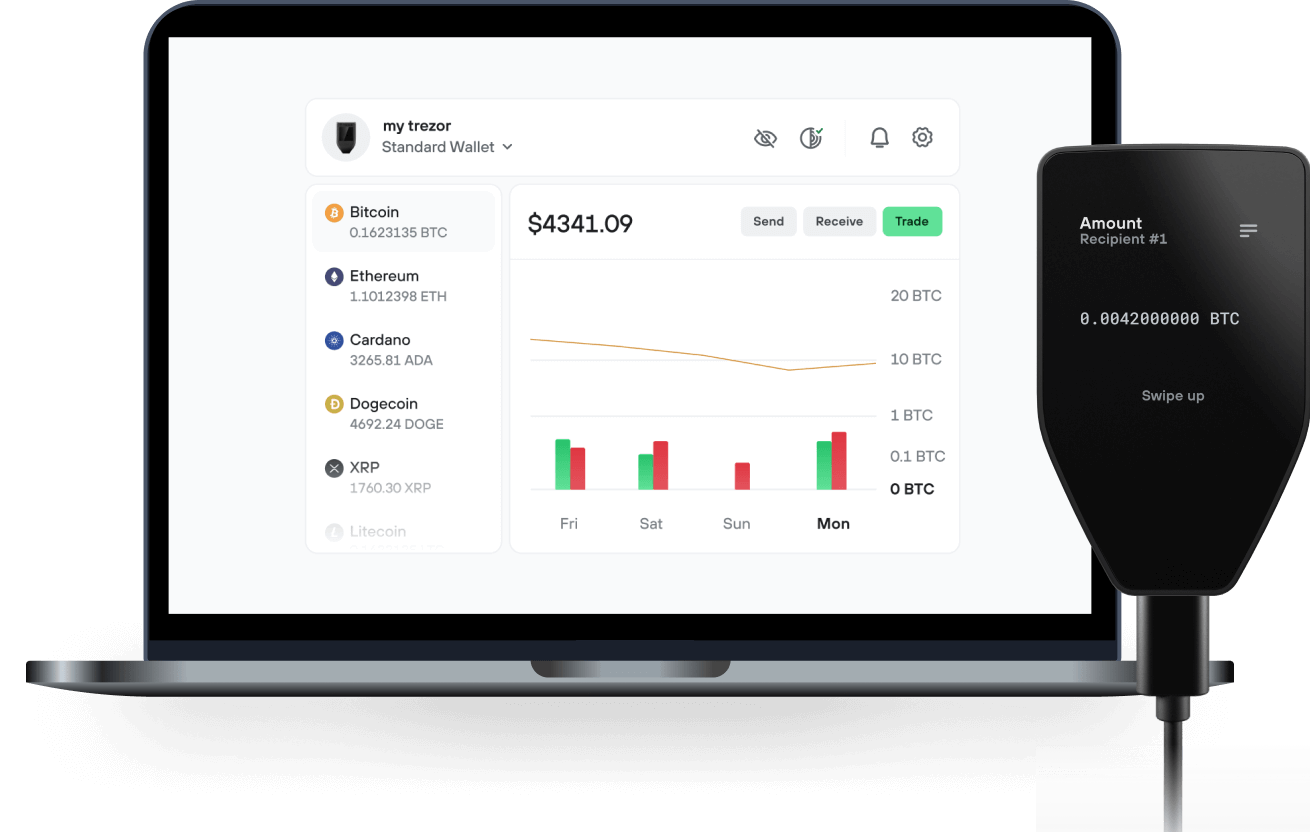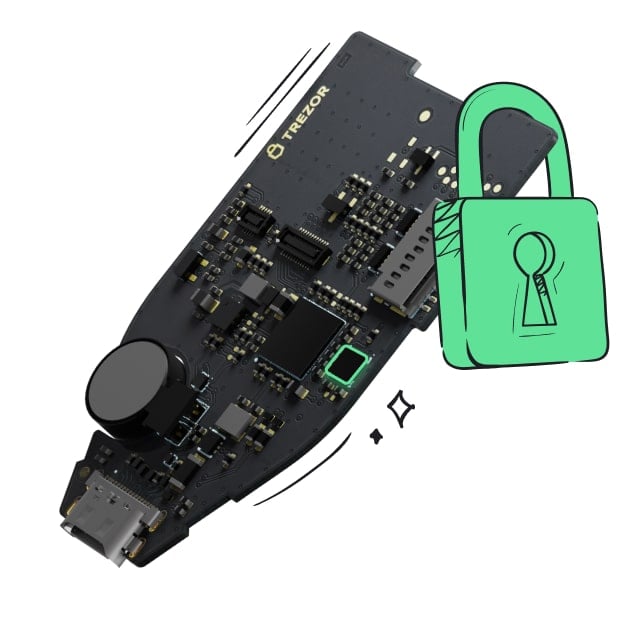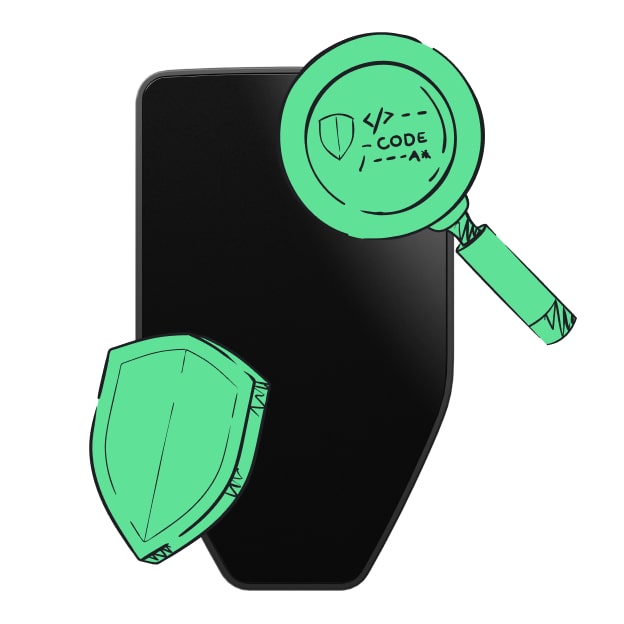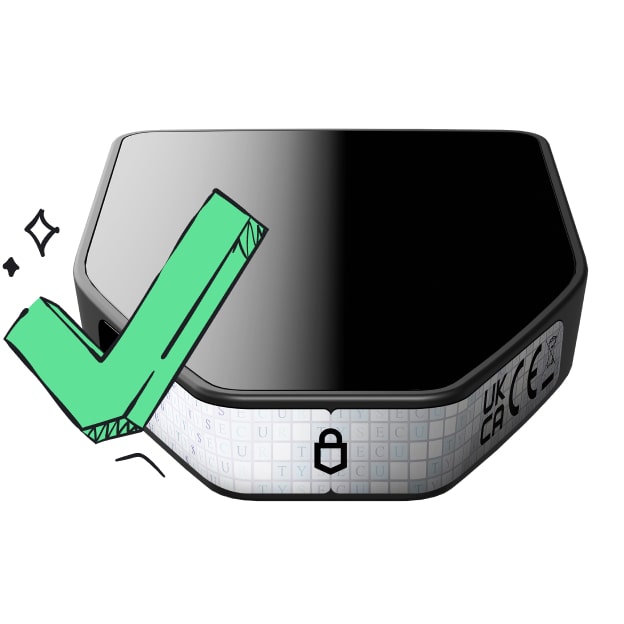Safe & secure BEAM wallet
Take control of your BEAM assets with complete confidence in the Trezor ecosystem.
- Secured by your hardware wallet
- Use with compatible hot wallets
- Trusted by over 2 million customers

Send & receive your BEAM with the Trezor Suite app

Send & receive
Trezor hardware wallets that support BEAM
Sync your Trezor with wallet apps
Manage your BEAM with your Trezor hardware wallet synced with several wallet apps.
Trezor Suite
MetaMask
Rabby
Supported BEAM Networks
- Ethereum
- Beam
Why a hardware wallet?
Go offline with Trezor
- You own 100% of your coins
- Your wallet is 100% safe offline
- Your data is 100% anonymous
- Your coins aren’t tied to any company
Online exchanges
- If an exchange fails, you lose your coins
- Exchanges are targets for hackers
- Your personal data may be exposed
- You don’t truly own your coins
How to BEAM on Trezor
Connect your Trezor
Open a third-party wallet app
Manage your assets
Make the most of your BEAM
Trezor keeps your BEAM secure
 Protected by Secure Element
Protected by Secure ElementThe best defense against both online and offline threats
 Your tokens, your control
Your tokens, your controlAbsolute control of every transaction with on-device confirmation
 Security starts with open-source
Security starts with open-sourceTransparent wallet design makes your Trezor better and safer
 Clear & simple wallet backup
Clear & simple wallet backupRecover access to your digital assets with a new backup standard
 Confidence from day one
Confidence from day onePackaging & device security seals protect your Trezor’s integrity
Beam Mimblewimble is a scalable, fungible, and confidential cryptocurrency based on the Mimblewimble implementation.
WHY BEAM? Core features include complete control over your privacy, All transactions are private by default, No addresses or other private information are stored on the blockchain, Superior scalability due to compact blockchain size, Opt-in Auditability, Support online and offline transactions, atomic swap, hardware wallets integration.
Governance model No premine, No ICO. Backed by Treasury Establishing a non-profit foundation to govern the protocol after Mainnet launch
How does it work? Wallets’ owners create new transaction using secure channel either online or offline Both wallets participate in signing the transaction using Schnorr protocol
Wallet sends transaction to node Each transaction contains a list of Inputs and Outputs represented by Pedersen Commitments, as well as explicit fees and kernels. Each transaction also contains non-interactive zero knowledge range proof to verify that the output transaction value is positive
Transaction is verified by the node Each transaction is verified with respect to the recent blockchain state which is stored as a Merkle Tree. The root hash of the tree is recorded in block header along with a proof of work. In addition, each node periodically creates compacted history to allow ‘fast sync’ of new and existing nodes.
Transaction is added to the mining pool A block is mined every minute and is sent back to the node for verification and distribution.
Mined blocks containing the new transactions are sent to the known peers A valid block that is extending the longest chain is accepted as a new Tip and propagated further until full consensus is reached.
Fast sync When a new node connects to the network for the first time it can request compacted history containing only system state and blockchain headers. There is no need to retrieve the entire transaction history.